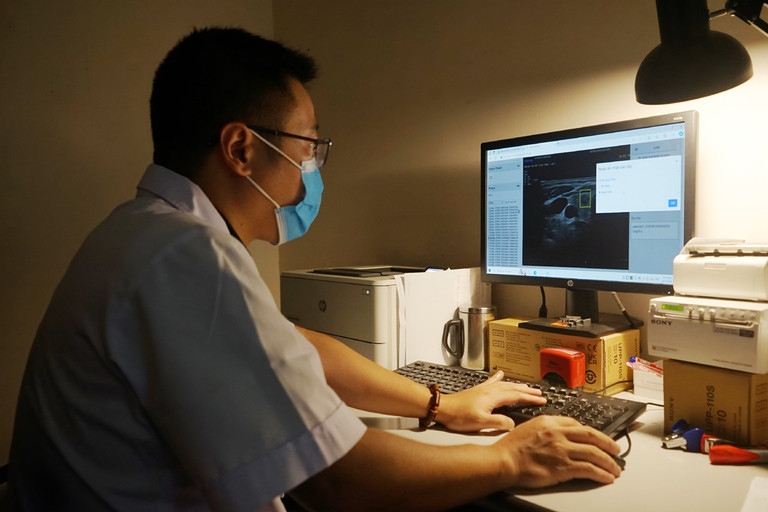
With a rapid increase in the number of newly contracted cases, thyroid cancer accounts for 3 percent of total cancer cases.
Globocan data released in 2020 showed that thyroid cancer ranks 10th in the number of new cases in both sexes and ranks sixth in women. Benign thyroid nodules are a common disease with the rate of 19-68 percent, and thyroid cancer accounts for 3-7 percent of thyroid nodule cases.
According to CEH deputy director Phan Huong Duong, the diagnosis of thyroid cancer depends on medical experts’ experience.
“At first, physicians need to prescribe standard ultrasound to detect patients’ nodules and their extent. Next, patients may have cells aspirated for testing,” Duong explained, adding that both need to be implemented by experienced doctors with deep knowledge.
However, this is a skill that local lower-level hospitals and private hospitals lack.
Meanwhile, if thyroid cancer is detected early and intervened promptly, the prognosis for treatment is good compared to other types of cancer.
Duong, who is leading a team of doctors, is joining forces with AI engineers from VNPT, to work on a hi-tech system with an aim of taking full advantage of AI to help doctors diagnose cancer and design therapies.
“With AI, the system is capable of defining whether the nodules are benign or malignant based on patients’ ultrasound images. This provides a scientific basis for doctors to make a conclusion about the situation of patients and design reasonable therapies,” Duong said.
“If so, doctors will not prescribe unnecessary cell aspiration and won’t miss the signs of disease,” he explained.
The research project is hoped not only to make progress in the healthcare sector, but also bring practical value to the entire community. As patients don’t have to have unnecessary prescribed tests, they will be able to save money and time.
Duong said the research team is collecting and standardizing 30,000 ultrasound images from more than 10,000 patients in the north (Central Endocrine Hospital), central region (Hue University of Medicine and Pharmacy Hospital) and the south (Cho Ray Hospital).
The process will ensure diversity of data, accuracy and diagnosis capability.
VNPT, which has more than 120 highly qualified engineers and good infrastructure, is the partner of the hospital.
Linh Giao